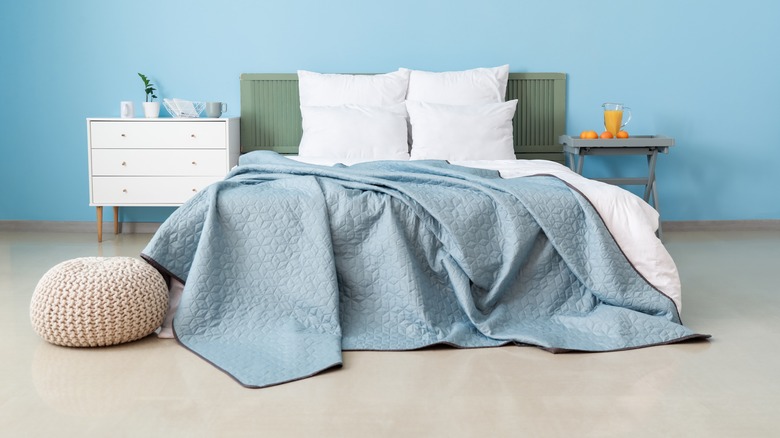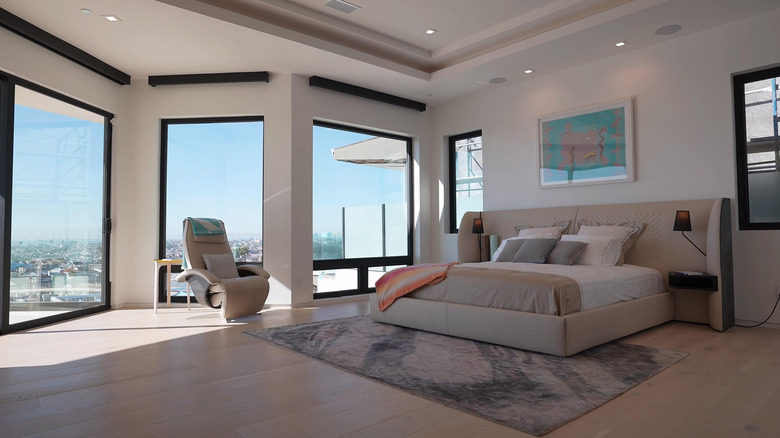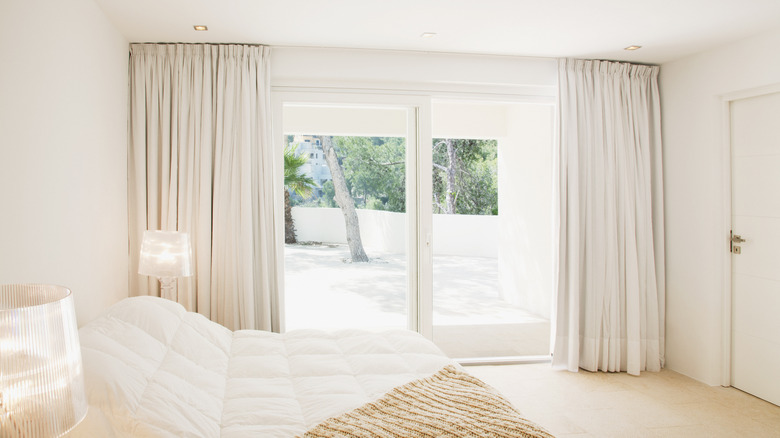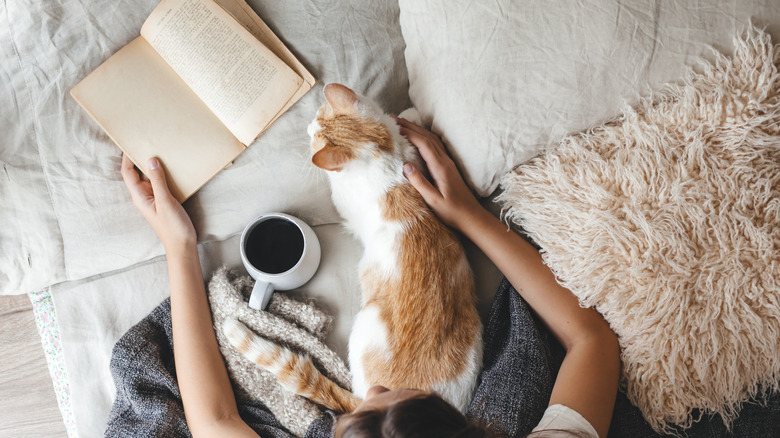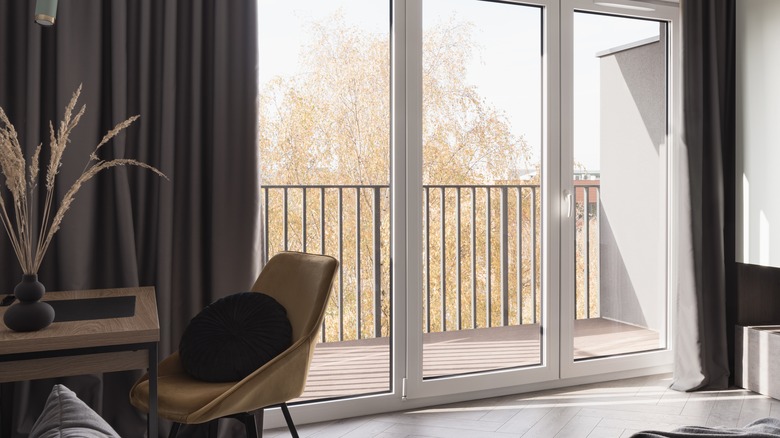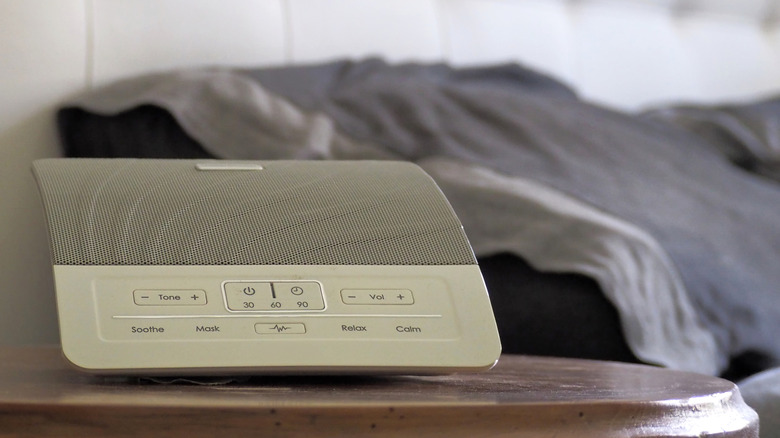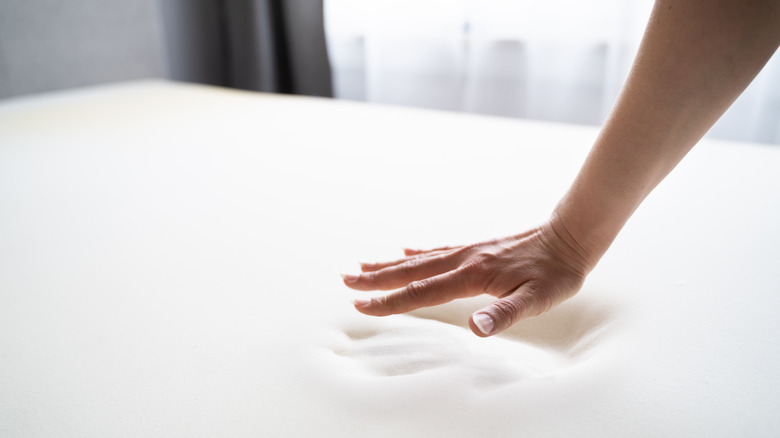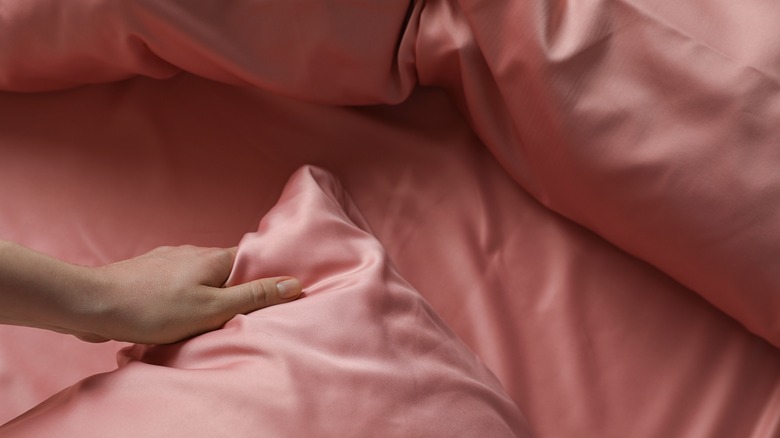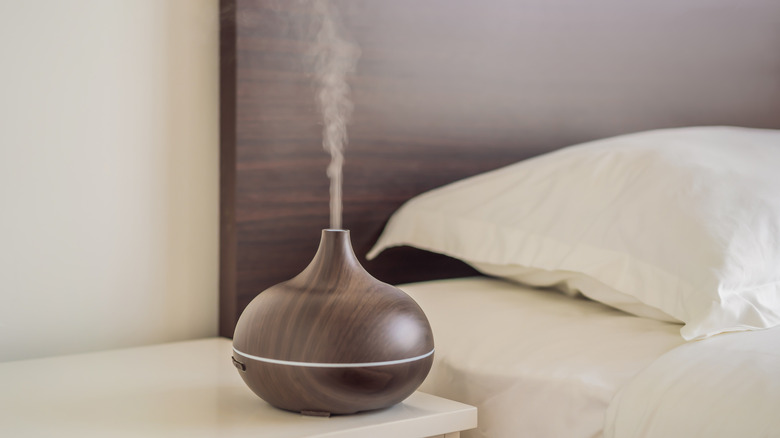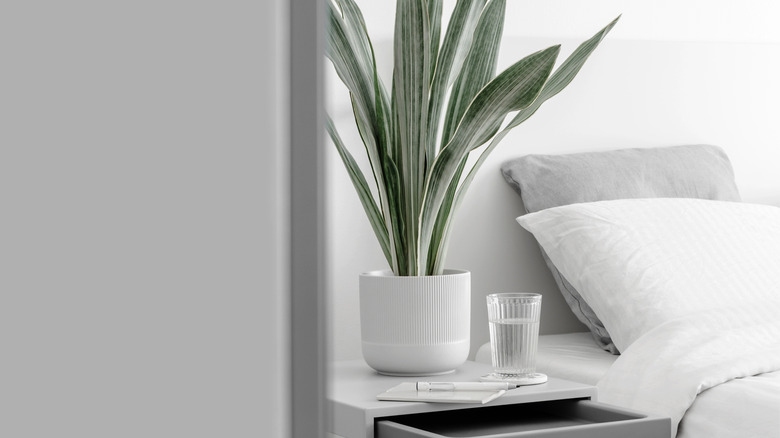How To Optimize Your Bedroom For The Best Night's Sleep
Just about everyone sometimes experiences sleepless nights, which could be caused by things such as drinking too much caffeine, experiencing high levels of stress, or not prioritizing relaxation, per the Sleep Health Foundation. However, if you often find it difficult to stay asleep through the night (and you haven't been diagnosed with a sleeping disorder), perhaps the problem lies in your bedroom's design.
As Simple Lionheart Life explains, because the bedroom is usually kept private from visitors, the design of this space may not be as carefully crafted as other areas of your home. However, for your own sake, you may want to start paying more attention to how certain style choices are affecting your rest.
Further, It's important to consider how to create the best environment by using four of the five senses, namely sight, hearing, touch, and scent. Below, you'll discover 10 ways to optimize your bedroom for the best sleep, and each of these tips involves enhancing at least one (if not multiple) of your senses.
1. Think about paint colors
First, let's talk about sight. One of the most important aspects of your bedroom is the paint color you use on the walls. This is because, while certain tones are soothing, others can energize. Therefore, to get the best night's sleep possible, paint the walls a calming tone that promotes relaxation. According to EatingWell, some of the best color choices include any shade of blue or green, pastel tones, and off-whites. However, make sure you steer clear from red, brown, purple, and black, as these colors could increase your heart rate or feel overwhelming.
2. Reduce clutter
Something else to consider when it comes to sight is the amount of clutter in your bedroom. Since this space is usually hidden from guests, some may use it to store things that don't have a dedicated place in their home. However, according to Sleep.com, this may cause anxiety, which could worsen your sleep. Some of the most common places to keep clutter include inside of closets and drawers, underneath the bed, on a corner armchair, and on top of dressers and nightstands.
3. Rearrange the furniture
While this may not seem very important, your bedroom's furniture arrangement may be negatively affecting your sleep. For instance, if your bed is too close to a doorway, you may subconsciously feel like you are in danger. To optimize your bedroom, Frances Hunt says to only keep pieces you really use in the space, which will most likely only include the bed, two nightstands, and a dresser. The most common bedroom setup places the bed and nightstands on the wall opposite the main door and the dresser across from the bed.
4. Limit technology
Because technology stimulates both sight and hearing, keeping it out of the bedroom is crucial for quality rest. The Sleep Foundation says that using your phone too soon before bed could keep you up at night. Not only that, but keeping your phone on your nightstand may disturb your sleep if you regularly receive notifications. The foundation recommends either removing technology from the bedroom altogether or limiting your usage before bed. Further, you could try replacing some of your screen time with a good book.
5. Cover windows
Another way to positively affect both your sight and hearing is by choosing the right window coverings. If you often continue sleeping while the sun rises, you could benefit from blackout curtains. While they block out light, they can also dampen noise from busy streets or loud neighbors, per Residential Acoustics. Typically, these curtains are made out of thick materials, and they come in a number of stylish colors.
6. Add white noise
In addition to limiting technology and investing in blackout curtains, white noise is another way to optimize your hearing while sleeping. Wirecutter recommends either purchasing a white noise machine, using a fan that emits a soothing sound, or installing a white noise app on your phone. If all else fails, noise-canceling headphones could be your saving grace.
7. Choose the right mattress
Moving onto touch, purchasing the right mattress is extremely important to getting a good night's sleep, for obvious reasons. Nectar says that mattresses over seven years old are in need of a replacement. Further, it's important to compare the different types when choosing the right one for you. While innersprings are the most popular, they may easily sag and feel cooling. Those who desire a warmer feel and back support may enjoy a memory foam mattress, while latex ones should last the longest.
8. Consider bedding
Another important aspect of touch is bedding, and Slumber Yard says that each type has its own benefits and drawbacks. To choose the right sheets for you, you'll first need to determine how much money you want to spend and if you often feel hot or cold while sleeping. While polyester is usually inexpensive, it's also not the best choice for those with allergies. Flannel and jersey are better for those who want to stay warm, while linen can feel cooling. And, while silk is smooth and luxe, it's very expensive.
9. Optimize scents
The last ingredient to creating the bedroom of your dreams is promoting sleep through calming scents. This could be done by diffusing essential oils, spraying an air freshener, or lathering scented lotions on your body, and the best scents to help you relax include lavender, chamomile, vanilla, and jasmine, per Sleep Outfitters. Further, keep in mind that, while candles can emit some of these scents, leaving them lit while sleeping is a safety hazard.
10. Decorate with plants
To combine the benefits of scent with sight, decorate with the right plants in your bedroom. According to 1-800-Flowers.com, some believe that smelling certain species can make you feel sleepier, including gardenia. Further, some types have been known to lessen feelings of stress, like jasmine and lavender. And, if you have allergies or often feel suffocated at night, you may benefit from plants that create more oxygen or reduce chemicals in the air, which include aloe vera, peace lilies, and snake plants.

